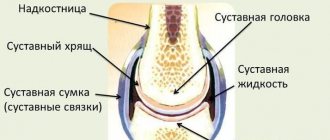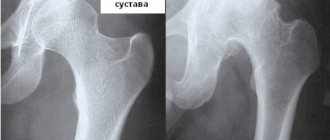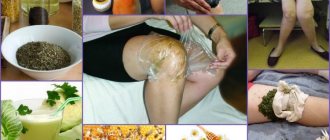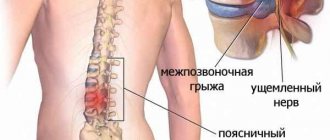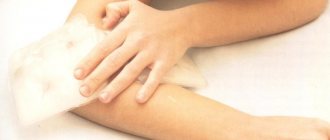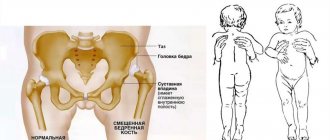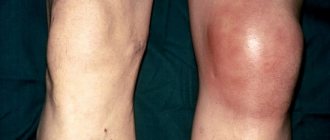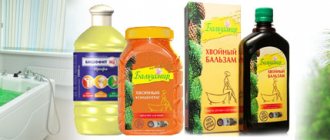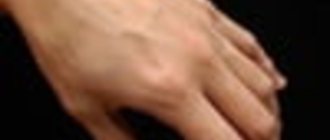Reasons for the development of hygroma
The disease may develop as a result of an unfortunate fall.
Before moving on to treating hygroma with folk remedies, you should understand why it occurs, because any therapy is ineffective if the provoking factors are not eliminated.
Hygroma is a benign neoplasm of the cyst type. This is a cavity formed by connective tissue, filled with fibrous contents. Hygromas are “companions” of joints and tendons, and are formed in the joint capsule or tendon sheaths.
Hygroma can occur in an area affected by tendinitis or bursitis.
The main reason for the development of this neoplasm is protrusion of the bursa or synovial sheath of the tendon, for example, due to professional activity. The impetus for the development of a tumor is trauma to the protruded zone. Favorite places for hygromas are the wrists. People whose professional activities involve stress on the extensor of the hand are faced with such a neoplasm. Therefore, hygroma can be called an occupational disease of tennis players, office workers, seamstresses and representatives of other professions who regularly perform the same type of movements with their hands.
Factors that increase the risk of educational development:
- joint injuries;
- bursitis, tendinitis;
- arthritis;
- genetic predisposition.
Hygroma is a hereditary disease; the tendency to form such cysts is passed on from parents to children.
When is surgery indicated?
You should know that conservative treatment, as well as puncture, does not always give the desired result, but only temporarily eliminates the development of the tumor. After all, puncture eliminates only the quantitative indicator of fluid in the cavity; its shell itself remains in the same place and without any special changes. It is advisable to perform the puncture several times. However, without surgery, it is impossible to completely eliminate the problem.
- The risk of relapse after puncture can be reduced only by eliminating the original source that led to the development of hygroma. It is especially important to ensure that the wrist is not exposed to physical stress, but physical therapy must be carried out, and, of course, a timely examination by a doctor.
- As medical practice shows, more than half of people, if there are no acute symptoms, do not pay any attention to hygroma, quietly living like this all their lives. But this is fundamentally wrong, since timely treatment is much better than dealing with the associated consequences. It is especially important not to self-medicate, and also not to completely trust alternative medicine. Untimely, uncontrolled treatment or lack of treatment always leads to complications that cannot be eliminated without surgical intervention.
- Surgery to eliminate a cyst on the wrist completely eliminates recurrence. Indications for surgery include a sharp increase in the volume of the cyst, acute pain, cellularity of the cyst, as well as limited joint movement. Moreover, the longer the operation is delayed, the worse the consequences can develop. In particular, ligaments of blood vessels and periarticular tissues may be damaged.
When performing surgery, an incision is made in the capsule, which allows the joint fluid to be brought out. When making an incision, the doctor separates the tissue around the cyst and removes the neoplasm itself. Before the procedure, the patient receives local anesthesia. Afterwards, the joint is immobilized, which prevents further growth of the hygroma. The finale is suturing the wound and applying a bandage. To improve the state of calm, a cast may be applied for 20 days. Antibiotic therapy is required after surgery.
Is hygroma dangerous?
In the vast majority of cases, hygromas do not cause any discomfort, except perhaps aesthetic ones. The cavity is quite dense to the touch and does not hurt when pressed. In rare cases, pain occurs when pressing, which is explained by the peculiarities of localization. For example, Achilles tendon hygroma can hurt when wearing shoes that are too tight or walking for a long time in high heels.
The cyst can be of any size, but on average does not exceed the diameter of a large coin.
Despite its large size and possible discomfort, hygroma is completely safe. This is a benign neoplasm that never transforms into cancer.
Trauma and rupture of the hygroma pose some health hazards. In this case, there is a risk of wound infection and inflammation in the tendon. To avoid such negative consequences, you need to prevent injuries. If the tumor does rupture, it is enough to apply a bandage with antibacterial ointment to the affected area to prevent infection.
Since hygroma is absolutely safe, it does not need to be treated. Typically, patients consult a doctor not because of physical discomfort, but because hygroma is a small but noticeable cosmetic defect. If the tumor is small and does not bother you, it generally does not need to be treated. In other cases, the most effective and time-tested folk remedies for treating hygroma will come to the rescue.
Puncture
This method is also used in cases where there is a non-advanced hygroma of the hand; treatment in this case comes down to suctioning out the contents of the tumor capsule using a syringe with a long needle. Puncture is also used to make an accurate diagnosis and exclude the presence of a malignant tumor instead of a hygroma.
Today, this treatment method is used less and less, as it often causes relapses of the disease. This is explained by the fact that after puncture the capsule shell remains in place and over time may again begin to secrete pathological serous fluid. To prevent recurrence of the disease, the patient is recommended to use elastic bandages or bandages for the wrist joint, and, if possible, limit physical activity on the affected joint of the hand.
Clinical picture
The hands are most often affected by the disease
Hygroma is easily diagnosed at home. It is a small tumor on the bend of the hand, on the inside or outside. Less commonly, tumors form on other joints. One of the favorite places for this neoplasm is the Achilles tendon, which is explained by frequent damage and inflammation of this area (bursitis).
Reference: in approximately 80% of cases, hygroma affects the wrist joint.
Hygroma can hurt when irritated, for example, when pressing with a finger or squeezing the tumor with clothing or shoes. The presence of pain depends on whether there are nearby nerve endings. Quite often, hygromas do not hurt or cause discomfort.
The epidermis in the area of hygroma may change or remain unchanged. If it forms on the hands or feet, most often the skin becomes rough, slightly red and begins to peel. When a tumor forms on less vulnerable joints, the skin remains unchanged.
Prevention
If people cannot always prevent the occurrence of many diseases, then the likelihood of developing hygroma can be significantly reduced. For this purpose, you need to adhere to certain rules:
- You cannot ignore injuries and consult a doctor in a timely manner.
- When performing monotonous movements with the hand, it is necessary to distribute the load.
- When performing physical exercises, you need to fix the joint with a bandage or elastic bandage.
Even if wrist hygroma is not accompanied by painful symptoms, it is still better not to self-medicate and not to advance the disease. Indeed, in some cases, pathology can lead to complications.
Traditional methods of treating hygroma
The most effective and efficient treatment method is surgical removal. Hygromas will have to be treated with folk remedies for quite a long time. Treatment at home is proposed to be carried out using various lotions and compresses that promote the resorption of the cyst. It is clear that this is a slow process, so you will have to be patient and perform the procedures daily until the end of the course.
Traditional methods in combination with conservative drug therapy help to cure hygroma best. In terms of effectiveness, such treatment is still inferior to puncture.
Copper coin
It is proposed to treat hygroma with folk remedies using a copper coin. However, the coin must first be prepared. To do this, heat regular table salt in a frying pan and “bury” a coin in it so that it also warms up thoroughly. Then take out the coin with tongs and cool it a little so that you can pick it up painlessly. Then apply the coin to the tumor and secure it with a bandage, leaving it overnight.
A copper coin will help remove hygroma at home in an average of 15-20 days. The secret of this treatment method is in stimulating local blood circulation and lymph movement. In fact, it’s not about the coin at all, but about the effect of heat. The coin is used only due to its ability to retain heat for a long time and gradually cool down. This method must be used daily until the tumor completely disappears.
Warming compress
The procedure should be performed for at least half a month
In general, how to treat hygroma with folk remedies will depend on what is at hand. This is the main advantage of traditional medicine over official medicine, since to eliminate symptoms you usually do not need to go to a pharmacy or see a doctor; it is enough to use simple products and items. One of such effective remedies for hygroma is regular alcohol.
The compress gently warms the tissue, dilates blood vessels, improves local blood flow, due to which the size of the tumor decreases. To prepare a compress, you will need a bandage or gauze and regular medical alcohol.
Fold the bandage several times and place it in a container filled with alcohol so that the fabric is well saturated. Then squeeze out excess alcohol and apply a compress to the affected joint. Secure the top with a clean, dry cloth or elastic bandage. Keep the compress overnight and repeat for two weeks.
Compresses with salt
Exposure of the tumor to a saline solution helps reduce swelling and improve metabolic processes. However, salt compresses are still effective if there is inflammation in the joint or skin.
For cooking you will need any salt - sea, table, iodized. It is better to give preference to sea salt, as it has a rich composition.
Compresses are prepared in two ways:
- Wet compress. Prepare a concentrated solution by stirring 3 tablespoons of salt in a glass of hot water. The crystals should completely dissolve. Then dip a bandage folded in several layers in the solution and apply it to the sore area, fixing it on top with cling film or a dry cloth. Keep it on all night. Since salt dries the skin very much, you can apply any greasy ointment in the morning.
- Warm dry compress. Heat a glass of salt in a frying pan. It should crack and “explode” - this indicates that the salt is hot. Then carefully pour into a thick cotton bag (you can use a regular wool sock). If it is too hot, wrap the bag with another layer of fabric. Apply a warm compress to the sore joint and hold until the salt has cooled.
Such traditional methods of treating hygroma should be used for 2-3 weeks. Treatment of hygroma at home with salt will not help quickly eliminate swelling, but it is quite safe, the only exception being inflammation in the joint - in such cases you can use a compress, but heating with salt is prohibited.
Hand baths with pine branches
Pine needles will help both cure hygroma at home and strengthen your nails and make your skin softer. Treatment of hygroma without surgery using folk remedies is carried out as follows: take 2-3 small pine branches, cut off the needles and cones, place in a basin and pour 2 liters of boiling water. After the water has cooled to an acceptable temperature, place the affected hands in the basin for 20 minutes. This bath can also be used for hygroma on the legs.
To enhance the effect of the bath, 2-3 drops of pine essential oil added to the water or 3 tablespoons of sea salt will help.
It is recommended to combine baths with compresses. In this case, you first need to steam the affected arm or leg in warm water with pine twigs, and then apply a therapeutic compress to the hygroma.
Recipe with egg and wine vinegar
Treating hygroma without surgery using folk remedies is possible if you have wine vinegar on hand. You'll have to do a little preparation here. You need to take one whole egg, place it in any container and fill it to the top with wine vinegar. Place the container in the refrigerator for 3-4 days, covering it with a lid.
After the allotted time, the absence of the shell will be revealed - the vinegar simply dissolves it. Then you need to take a needle and pierce the thin film on the surface of the egg. Collect the yolk in a separate container, add a tablespoon of vinegar in which the egg was “cooked”, and the same amount of pure turpentine. Mix the mixture thoroughly and cool in the refrigerator. Then apply to the affected joint, secure with a bandage and leave for two hours. Use until symptoms disappear completely.
Kaolin
Clay compresses are made before going to bed
White clay, or kaolin, is a real storehouse of nutrients. Few people know that it can be used to remove hygroma at home. To do this, you need to prepare the following compress. Dissolve 2 tablespoons of sea salt in 100 ml of water, pour the resulting solution into 50 g of clay. If the mixture is too dry, add a little more hot water to obtain a consistency suitable for application to the skin. Leave the resulting composition for 2-3 hours so that it dries a little and becomes plastic. Then apply a very thick layer of clay to the affected joint and secure with a bandage. Keep the compress on all night.
Clay saturates with useful substances, has anti-inflammatory and anti-edematous effects, and accelerates metabolic processes. Just 10-12 such daily procedures are enough to effectively remove hygroma at home.
Compress with physalis
At home, ordinary physalis perfectly removes hygroma. You need to take a dozen fruits and grind them into pulp in a blender or meat grinder. Then apply the resulting mass to the sore joint, wrap it on top with cling film and a warm shawl. Leave overnight. Use until the tumor completely disappears.
Iodine for hygroma
Iodine will help both get rid of hygroma at home and prevent its reoccurrence. To prepare the medicine, you need to crush an analgin tablet into powder and add a teaspoon of iodine to it. Apply this product to the sore spot and rub gently. There is no need to wrap the joint. If the composition begins to burn strongly, you should wash it off immediately. You cannot get carried away with iodine treatment; 5 daily procedures are enough for the hygroma to noticeably decrease in size.
Rubbing with lilac tincture
Traditional medicine uses lilac for many joint diseases
The most effective folk remedies for joint diseases are tinctures of lilac, leaves and inflorescences, and hygromas can be treated with the same methods. To prepare the tincture, you need to pour a quarter glass of lilac flowers with half a glass of alcohol and leave it in a glass container for two weeks. Then the resulting tincture is applied to the sore joint and gently rubbed with a piece of bandage or a towel. The procedure must be repeated in the morning and evening until the symptoms of the pathology go away.
Conservative therapy
If hygroma of the wrist, hand, or fingers was detected at the initial stage of formation, the attending physician prescribes a set of physiotherapeutic procedures along with immobilization of the joint.
How to treat hygroma on the wrist, hand and fingers conservatively:
- A course of electrophoresis with iodine.
- Blockades with a glucocorticoid agent (Diprospan, Hydrocortisone).
- Applications with mud and paraffin.
- Soda and salt baths.
- UHF with deep heating of tissues and improvement of local blood circulation.
- Ultrasound therapy.
- Ultraviolet irradiation.
To ensure immobility and rest in the joint, the patient is given an immobilization bandage for a week: a plaster splint or tight bandage. If conservative therapy does not produce results, surgical excision of the tumor is indicated.
Prices
| Code | Name of service | Price |
| 1108 | Removal of benign soft tissue formations up to 3 cm in diameter. | 3000 rub |
| 1109 | Removal of benign soft tissue formations up to 6 cm in diameter. | 4000 rub |
| 1110 | Removal of benign soft tissue formations up to 10 cm in diameter. | 5000 rub |
| 1111 | Removal of benign soft tissue formations from 10 cm to 15 cm in diameter. | 8000 rub. |
| 1112 | Opening abscesses, phlegmon 1st category of complexity | 2500 rub. |
Propolis as a means of combating disease
- take 20 g of propolis and 20 g of butter;
- mix the ingredients in a ceramic bowl;
- simmer over low heat for 3 hours;
- Strain the resulting mass through a sieve into a glass container.
- smear the formation 2 times a day until the disease is completely eliminated.
Some foods, herbs, and minerals are suitable for home treatment of hygroma.
Copper coin
A little history. Metal therapy was very popular back in ancient India and Greece. Copper coins were used to treat various diseases. Copper helped relieve inflammation, resolve swelling, had a bactericidal effect when applied topically, and relieved headaches within 15–20 minutes. In Rus', copper coins were used for medicinal purposes. It is believed that only coins issued before 1961 have healing powers, as they were made of vacuum copper.
Before you start treating hygroma with copper, you need to clean the coin or copper plate. To do this, dissolve 1 tbsp in a glass of water. l. salt and soak the coin in the saline solution for about 1 hour. Another cleaning method: heat the coin over a fire, cool it and rub it with sandpaper. Place the coin on your wrist and secure it with a bandage for the day. If after the application a dark green spot remains on your hand, continue to treat further. If redness appears, you should get rid of this treatment method and consult a doctor.
Summing up
Treatment of hygroma with the folk methods presented to our attention should be carried out simultaneously with the use of medications. This will allow you to achieve the desired positive result much faster and avoid various complications.
If you successfully overcome the disease, it is recommended to follow special preventive measures. First of all, you need to treat all bruises and injuries as promptly as possible. It is very important to correctly distribute physical activity, avoiding impact on the same group of joints. In case of any injury, you should immediately consult a doctor and carry out the necessary treatment. Otherwise, there is a risk of encountering the formation of hygroma.
Use of physalis fruits
When deciding how to stop the increase in hygroma using folk methods, experts recommend using the fruits of physalis. They must first be ground using a meat grinder. The resulting composition must be applied to the tumor and cellophane placed on top.
The bandage is secured with a pharmaceutical elastic bandage and removed only in the morning. This should be done for at least a couple of weeks, applying a compress daily. After this time, the hygroma completely disappears. A barely noticeable trace remains for some time, but it also disappears after a month.
Using healing clay
Using special pharmaceutical clay, you can successfully eliminate hygromas, which, according to preliminary medical parameters, could be eliminated exclusively by surgical methods.
For a positive result, you need to apply special red clay purchased at the pharmacy to the tumor. It is advisable to buy and use it in the summer, since the powder must be kept in the sun before use.
After such a sunbath, the clay is thoroughly mixed with water. It is added gradually until the mixed clay takes on the appearance of sour cream. The finished composition is laid out on previously prepared cotton natural fabric and then applied to the affected area.
The lotion should be carefully wrapped in a warm piece of cloth and kept for two to three hours. It is not recommended to do the procedure at night; clay can cause irritation. After removing the bandage, the hygroma must be lubricated with bile purchased at the pharmacy or with the most common iodine to consolidate the effect.
It is better to alternate these procedures - make a compress during the day, and lubricate with bile at night.
Diagnostic procedures
To diagnose the disease, you need to contact a specialist:
- traumatologist;
- surgeon;
- orthopedist;
- oncologist.
The disease is more typical for young people 20-30 years old; men are affected 3 times less often than women.
If a hygroma appears on a finger, it is most reasonable to consult a surgeon or traumatologist.
First of all, diagnosis is aimed at excluding diseases similar to hygroma, such as:
- cyst on a finger;
- lipoma;
- abscess;
- atheroma;
- benign tumor of another etiology;
- pathology of cartilage or bones;
- artery aneurysm;
- malignant neoplasm.
To confirm the diagnosis, various procedures are performed:
- survey;
- inspection;
- palpation;
- ultrasonography;
- magnetic resonance or computed tomography;
- radiography;
- aspiration;
- biopsy.
Additional research methods (including laboratory ones) are also used, which help not only in making a diagnosis, but also in selecting individual treatment:
The doctor will prescribe a hardware examination of the finger hygroma to determine the extent of tissue damage and prescribe appropriate therapy.
- biochemical and general analysis of blood and urine;
- blood glucose test;
- fluorography or x-ray of the lungs;
- tests for sexually transmitted diseases, HIV, hepatitis;
- electrocardiogram.
Diagnostics
Diagnosis of hygroma begins with its examination, palpation and listening to the patient’s complaints.
To ensure that the tumor is benign and distinguish it from other neoplasms, a person may be referred to such instrumental examination methods as:
- X-ray of the hand.
This technique allows you to distinguish hygroma from osteosarcoma and other bone tissue pathologies.
- Ultrasound.
This method is the most accessible and informative in terms of diagnosing hygroma. Ultrasound allows you to assess the size of the tumor, provides information about its structure and connection with surrounding tissues.
If the doctor has doubts about the benignity of the tumor, he can refer the patient for an MRI, as well as a puncture. However, such studies for hygroma are rarely prescribed.
